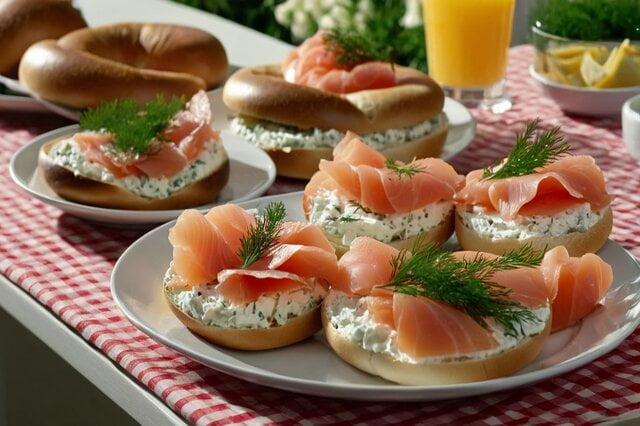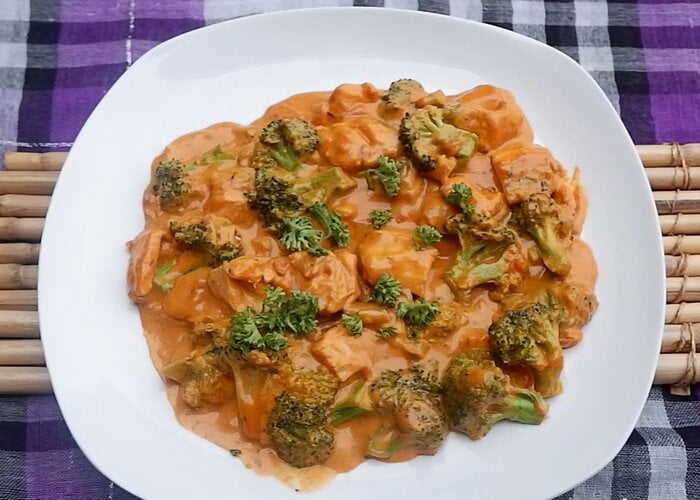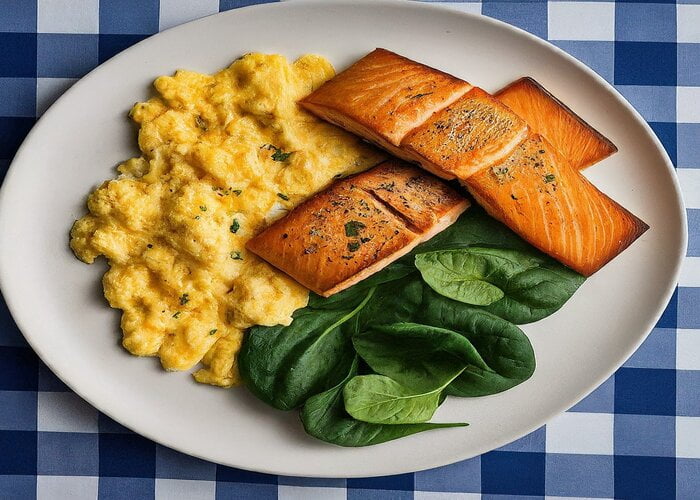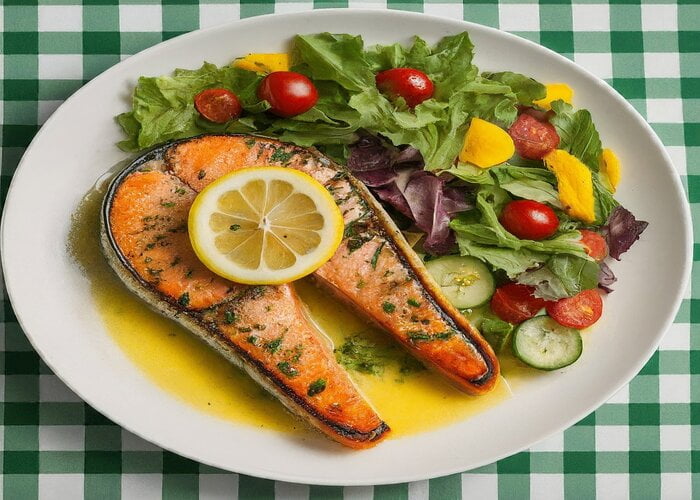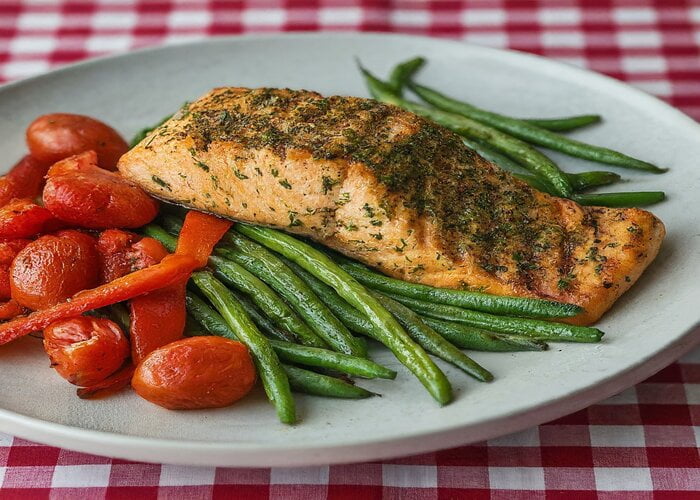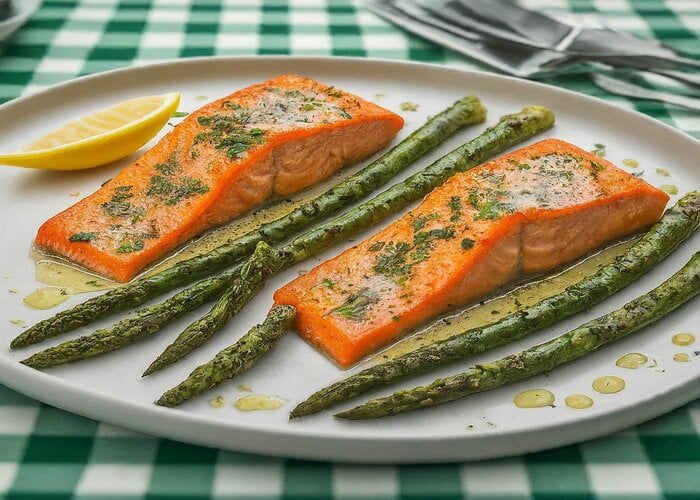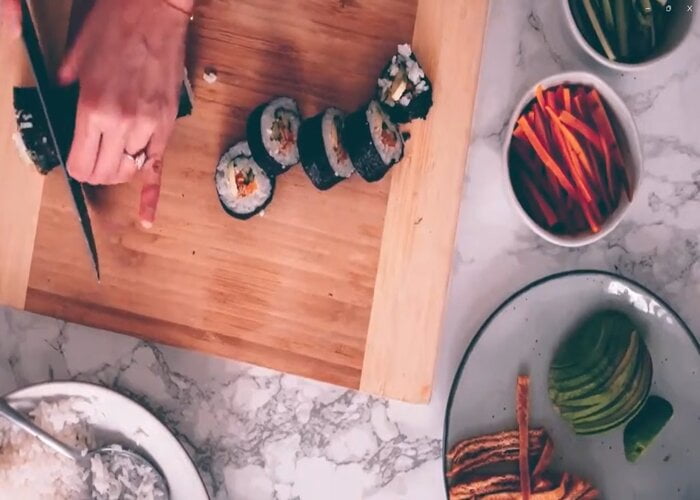Salmon is a nutritional powerhouse and a culinary delight.
Packed with omega-3 fatty acids and boasting a rich, satisfying flavour, it’s no wonder this fish is a popular choice for home cooks.
But with so many cooking methods out there, how do you choose the perfect one?
Fear not!
This guide will delve into the most popular ways to cook salmon, highlighting their advantages and guiding you towards a delicious and satisfying meal.
Let’s explore selecting the perfect salmon, popular cooking techniques to unlock the perfect salmon and salmon recipes for every occasion.
Selecting the Perfect Salmon
The foundation of a great dish starts with high-quality ingredients. When choosing salmon, freshness is paramount. Look for fillets with vibrant orange flesh, firm to the touch, and no fishy odor.
Here are some additional tips for selecting the perfect salmon:
- Skin-on vs. Skinless:
- Both options have merits.
Skin-on fillets offer a crispy exterior when cooked, while skinless fillets are easier to portion.Choose based on your preference.
- Wild vs. Farmed:
- Wild salmon tends to have a slightly richer flavour, while farmed salmon is often more affordable.
Both can be delicious choices.
- Cuts:
- Salmon comes in various cuts.
Fillets are boneless and perfect for pan-frying, baking, or grilling.Steaks are thicker cuts ideal for grilling or broiling.
- Canned Salmon:
- An excellent pantry staple, canned salmon is cooked during the canning process.
It’s already cooked and requires minimal preparation, making it ideal for quick and easy meals like salmon salad sandwiches or salmon croquettes.
Prepping Salmon for Culinary Perfection: A Step-by-Step Guide
Salmon is a beloved protein source lauded for its rich flavour and impressive health benefits.
But before you fire up the grill or preheat the oven, there’s a crucial step: proper preparation.
Here’s a detailed guide to ensure your salmon cooks up restaurant-worthy every time.
- The Thaw:
- If using frozen salmon, thawing is paramount.
The safest method is slow and steady: transfer the fish from the freezer to the refrigerator overnight.In a pinch, thaw it submerged in a bowl of cold water, changing the water every 30 minutes until defrosted.
Avoid thawing at room temperature, which can promote bacterial growth.
- Step 2: Inspect and Clean:
- Gently rinse the thawed salmon under cold running water.
Inspect the flesh for any pin bones – small, white bones sometimes embedded in the fillet.Use sharp tweezers or needle-nose pliers to remove them with a gentle twisting motion.
- Step 3: Skin off or Skin On?:
- This depends on your recipe and preference.
Skin-on fillets offer a delightful crisp exterior when cooked.If using skin-on, make sure to score the skin with a sharp knife at diagonal intervals – this prevents the skin from warping during cooking.
To remove the skin, place the salmon skin-side down on a cutting board.
Slide a sharp knife horizontally between the flesh and the skin, holding the skin taut with your other hand. - Step 4: Patting for Perfection:
- Excess moisture is the enemy of a crispy sear.
Pat the salmon fillets dry with paper towels, ensuring no water remains on the surface.This allows for even browning and prevents the fish from steaming during cooking.
- Step 5: Seasoning Symphony:
- Now comes the fun part – adding flavour!
A simple yet effective approach is to season generously with kosher salt and freshly ground black pepper.For a more vibrant profile, explore herbs like dill, rosemary, or thyme.
Spice enthusiasts can experiment with paprika, chilli flakes, or a pinch of cayenne pepper.
Let the salmon sit for 15-20 minutes after seasoning to allow the flavours to meld.
- Bonus Tip: The Room Temperature Rest:
- Taking salmon out of the refrigerator 20-30 minutes before cooking allows it to come to room temperature.
This ensures more even cooking throughout the flesh, preventing a raw center and overcooked exterior.
By following these steps, you’ll have perfectly prepped salmon ready to be transformed into a delicious and healthy meal.
So, grab your favourite cooking method – pan-searing, baking, grilling – and get ready to enjoy the culinary magic of perfectly prepared salmon!
Salmon Perfection Unlocked: Easy Cooking Methods
Salmon, with its rich flavour and impressive health benefits, is a seafood superstar.
But how do you unlock its full potential in the kitchen?
Here’s a glimpse into some of the most popular cooking methods for salmon, highlighting their advantages to tantalise your taste buds and guide you towards the perfect plate.
Unveiling the Versatility of Salmon: let’s take a tour of cooking methods:
- Pan-Seared Perfection:
- For a restaurant-worthy crust and a quick weeknight meal, pan-searing reigns supreme.
The high heat creates a beautiful Maillard reaction, caramelising the skin for a delightful textural contrast with the juicy interior.
This method is ideal for salmon fillets with skin-on, allowing you to achieve that coveted crispiness.
Advantages: Fast and flavourful, pan-searing preserves the natural moisture of the salmon, resulting in a perfectly cooked centre.
Plus, the crispy skin adds another dimension of texture. - Baking: Simplicity at its Finest
- Baking is a fuss-free approach that yields consistently moist and flaky salmon.
This method allows you to infuse the fish with a variety of flavours by using marinades, herbs, and vegetables.
Salmon can be baked whole, in fillets, or even in portions for individual servings.
Advantages: Baking is perfect for beginners or busy cooks.
It’s easy to clean up afterwards, and the hands-off approach allows you to prepare side dishes while the salmon cooks. - Broiling/Oven Grilling: A Finishing Touch
- Broiling offers a quick way to add a browned crust to pre-cooked salmon or to finish off thicker cuts.
The intense heat from the broiler caramelizes the exterior, creating a smoky depth of flavor.
Advantages: Broiling is ideal for achieving a well-done crust without overcooking the salmon.
It’s also a great way to add a finishing touch to salmon that has been cooked sous vide or poached. - Poaching: Gentle Cooking for Delicate Flavours
- Poaching is a gentle method that suspends salmon in simmering liquid, resulting in incredibly moist and tender fish.
This method is perfect for incorporating subtle flavours from herbs, citrus, or even court bouillon.
Poached salmon flakes beautifully, making it ideal for salads or salmon cakes.
Advantages: Poaching preserves the delicate flavors and moisture of the salmon.
It’s a healthy cooking option as it uses minimal fat. - BBQ Grilling: Smoky Summertime Delight
- Grilling infuses salmon with a smoky kiss, perfect for those who love a hint of char.
This method works best for thicker cuts of salmon, like steaks, to prevent them from drying out.
Advantages: Grilling brings out a unique smoky flavour in salmon.
It’s a great way to cook salmon outdoors and enjoy a summer barbecue.
With this culinary compass, you’re well on your way to exploring the exciting world of cooking salmon.
So why not try out one of these healthy salmon meals for your next dinner?
Your wellbeing will thank you for it!
10 Delicious Salmon Recipes. Ready in Minutes
Unleash your inner chef with our incredible selection of salmon recipes! From quick pan-seared dishes to gourmet meals, find the perfect salmon food recipe to tantalise your taste buds.

